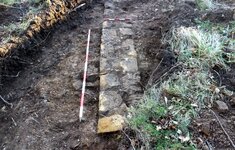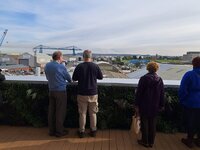Today at 2pm you can step into a brand new office block - with a rare if not unique view of the working River Tees in one direction, the other overlooking old Middlesbrough where archaeologist Oliver Cook has been digging deep beneath Victorian Middlesbrough.
You can hear what he had found and the tantalising glimpses he has unearthed pointing to an earlier history than the Infant Hercules.
Talk starts 2pm at AV Dawson - The Staiths office block at the Port Of Middlesbrough - visitor parking available in main car park and car park across the road.
FREE EVENT for Discover Middesbrough

You can hear what he had found and the tantalising glimpses he has unearthed pointing to an earlier history than the Infant Hercules.
Talk starts 2pm at AV Dawson - The Staiths office block at the Port Of Middlesbrough - visitor parking available in main car park and car park across the road.
FREE EVENT for Discover Middesbrough




